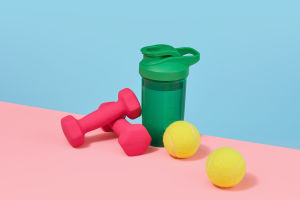Pool Safety Essentials
Swimming pools are a favorite for relaxation and exercise, but they also come with risks.
Every year, accidents happen at pools, making it crucial for facilities to have the proper life-saving equipment on hand.
Immediate access to these tools can make a critical difference in emergencies, providing essential support until professional help arrives. Here's a look at key life-saving equipment every pool should have and why it's vital for swimmer safety.
Pool accidents can occur in an instant. From children accidentally falling in to experienced swimmers encountering cramps or sudden health issues, various situations can lead to danger within seconds.
Life-saving equipment ensures emergencies are managed quickly. With effective tools readily available, lifeguards and bystanders can respond immediately, significantly improving chances of a positive outcome.
Rapid action is especially crucial in water incidents, as drowning can happen within 30 seconds, particularly for young children. Proper life-saving equipment allows for fast, life-saving intervention when it's needed most.
To enhance swimmer safety, certain pieces of equipment are non-negotiable at any pool facility.
1. Rescue Tubes and Lifebuoys
Rescue tubes and lifebuoys are essential, providing buoyant support for swimmers in distress. Lifeguards use these tools to keep individuals afloat and assist them back to safety.
Lifebuoys can be thrown into the water, allowing swimmers to hold on while being guided to the pool's edge. This equipment is easy to use and effective in most rescue situations.
2. Reaching Poles
Reaching poles are long, sturdy poles that extend out to a swimmer, allowing rescuers to pull them to safety without entering the water. Especially useful in shallow pools, these poles enable bystanders to help with minimal training, making them an invaluable addition to any poolside safety setup.
3. First Aid Kits
A fully stocked first aid kit is crucial for handling injuries around the pool. Minor scrapes, cuts, or bruises are common poolside, as slips and falls can happen.
A comprehensive first aid kit with bandages, antiseptic wipes, scissors, and adhesive tape allows immediate care for injuries until medical assistance is available.
4. Automated External Defibrillator (AED)
An automated external defibrillator (AED) is essential in cases of cardiac arrest. While not directly related to swimming, cardiac incidents can occur due to medical conditions or prolonged submersion.
AEDs are simple to use, with instructions provided, and they significantly improve survival rates by restoring a heartbeat before emergency responders arrive.
5. Emergency Telephone
An emergency telephone at the pool provides a direct line to emergency services, especially important in areas with limited cell reception. Having immediate communication with medical professionals can make a critical difference, ensuring help is dispatched as soon as possible.
Having life-saving equipment is essential, but maintenance and proper training are equally important. Equipment should be inspected regularly to ensure it's functional.
Lifeguards and staff should be trained in CPR and first aid, with a focus on using the available tools efficiently. Well-prepared staff and functional equipment create a safer environment, protecting swimmers from accidents.
Every swimming pool should prioritize safety by equipping the facility with life-saving tools. Well-maintained, accessible equipment and a trained staff prevent minor accidents from turning into major tragedies.
Whether public or private, the right tools and preparedness create a safer, more enjoyable swimming environment for everyone.


